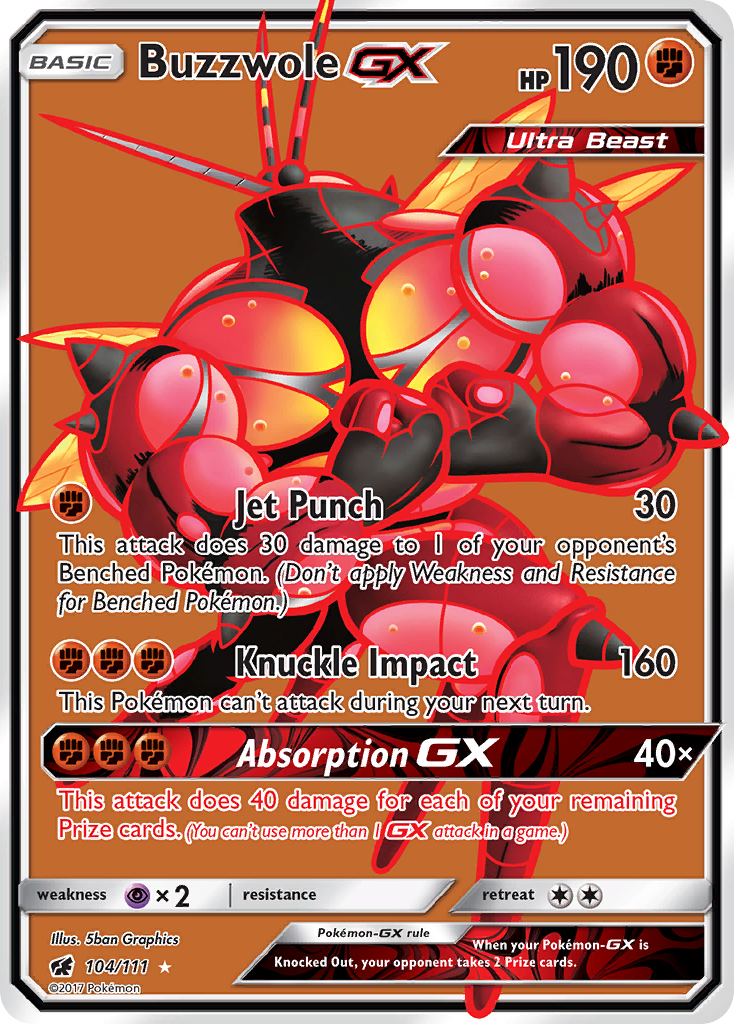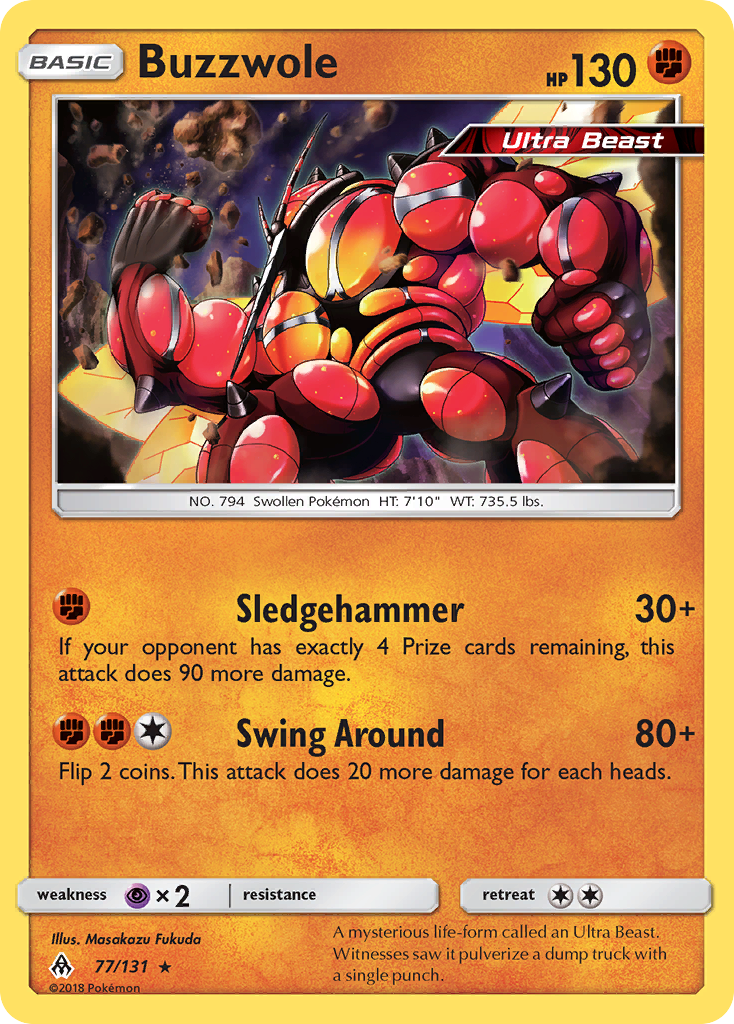Rock-Paper-Scissors? The Forbidden Light Type Triangle
 Hello everyone! With the finish in Roanoke last weekend, we are now officially done with Expanded Regionals for the year, which means we can now focus all our attention onto the new Forbidden Light Standard Format! While many of us may not have had a chance to compete with this set yet, we thankfully aren’t completely lacking for data. Four major tournaments -- the South African National Championship, the Mexico City Special Event, the Tours Special Event, and the Melbourne Regional Championships -- have already occurred with the new set, and have given us some interesting Top-8 data and new decks to go with them. Three decks in particular have stood out in these events and in the League Cups held so far; those would be Buzzwole-GX / Lycanroc-GX, Malamar, and, to a lesser extent, Zoroark-GX.
Hello everyone! With the finish in Roanoke last weekend, we are now officially done with Expanded Regionals for the year, which means we can now focus all our attention onto the new Forbidden Light Standard Format! While many of us may not have had a chance to compete with this set yet, we thankfully aren’t completely lacking for data. Four major tournaments -- the South African National Championship, the Mexico City Special Event, the Tours Special Event, and the Melbourne Regional Championships -- have already occurred with the new set, and have given us some interesting Top-8 data and new decks to go with them. Three decks in particular have stood out in these events and in the League Cups held so far; those would be Buzzwole-GX / Lycanroc-GX, Malamar, and, to a lesser extent, Zoroark-GX.
In Buzzwole-GX, we have an established deck making huge gains from this newest set. Malamar is the newcomer to the format and has positioned itself as the best deck to counter those Buzzwole-GX decks, as it takes advantage of favorable typing and strong attackers. Likewise, as Malamar decks start to play a larger role in the format, Zoroark decks have begun to refine themselves and make a return.
In this new format, we’ve evolved somewhat of a triangle: Fighting beats Dark, Psychic beats Fighting, Dark beats Psychic. For the many of us who know and love the video game side of Pokemon, this might seem familiar to you. Of course, being that this is the tier-one meta of the TCG, things aren’t quite as simple as the rock-paper-scissors concept might imply. All three of these decks, in addition to being incredibly strong, also have great versatility in their ability to plan for their “bad” matchup in the triangle. In this article, I’ll be going over each of these three decks, providing an overview of the deck and a deck list to go with them, while also highlighting what potential techs and strategies can be used against the other two archetypes. Hopefully by the end, not only will you have a better understanding of what makes each of these decks uniquely strong, but you’ll be able to decide if you want to partner up with one of them for the final tournaments of the season.
Buzzwole-GX
Without a doubt, this deck has been the one most commonly championed as the BDIF after the release of Forbidden Light. Already an incredibly accomplished deck during the BKT-ULP format, BuzzRoc has only gotten stronger, with new additions such as Diancie Prism Star, Beast Energy Prism Star, and the new non-GX Buzzwole, not to mention Beast Ring! Doing damage has become easier, accelerating Energy has become easier, and the deck now has more ways to attack and dominate than ever.
However, all this added strength has come with a cost. Since so many know that this deck is the strongest on-paper deck in the format, it makes anti-Buzzwole techs and counters incredibly popular. Malamar decks have been built to hard-counter Buzzwole, chock-full of Psychic-type attackers that can get easy OHKOs. Among other decks, pretty much everyone nowadays will carry at least one of Mew, Mewtwo, or Mew-EX to have a tech Psychic-type that can OHKO Buzzwole-GX, and do so without much difficulty. Despite those obstacles though, Buzzwole remains dominant, as its on-paper strength has translated well into actual play.
Here is the decklist I’ve been using for Buzzwole-GX / Lycanroc-GX:
Pokémon (17)
- 3x Buzzwole-GX (CRI #104)
- 2x Lycanroc-GX (GRI #138)
- 2x Rockruff (FLI #75)
- 2x Octillery (BKT #33)
- 2x Remoraid (BKT #31)
- 1x Zygarde-EX (FCO #54)
- 1x Buzzwole (FLI #77)
- 1x Sudowoodo (BKP #67)
- 1x Oricorio (GRI #14)
- 1x Diancie Prism Star
- 1x Tapu Lele-GX (GRI #60)
Trainers (30)
Card Inclusions
While there may be quite a few techs in this list, the core itself is fairly standard. Overall, you want a Buzzwole deck that is fast, strong, and consistent, and this list certainly fits the bill, while still including many one-of Pokemon that can help you in various matchups. The general strategy for this deck hasn’t changed at all, but your ability to pull off that strategy has become much easier.
Buzzwole is a tremendous non-GX attacker, and will force your opponent to make a difficult decision: do they KO a GX first and thus activate the additional damage on Buzzwole’s Sledgehammer, or do they try and play around that and thus go on to odd Prizes? If they choose the first option, then Buzzwole becomes a tremendous attacker. Choice Band + Diancie Prism Star means that Sledgehammer hits for 170 damage for only one Energy – or 190 with a Strong Energy attachment. That’s enough to Knock Out a Tapu Lele-GX or Zoroark-GX; with a Strong Energy, enough to Knock Out an opposing Buzzwole-GX or Ultra Necrozma-GX; with a Beast Energy, enough to Knock Out a Lycanroc-GX or a Dawn Wings Necrozma-GX. Not only that, but your opponent still needs to be able to Guzma around the Buzzwole, otherwise you force them to odd Prizes anyway! By attacking for only one Energy, Buzzwole also allows you to set up your attackers for the next turn with Beast Ring and Max Elixir, potentially putting your opponent into an unwinnable state early in the game. If you’ve managed to get ahead early and take the first few Prizes (not exactly a tough challenge for a Buzzwole-GX deck), you can easily get into a situation where Buzzwole takes your third and fourth Prizes for you, and you have multiple Buzzwole-GX on the Bench ready to go and win you the game. Even if they do play around it, that only buys you another turn to attack with Buzzwole-GX and Lycanroc-GX, which will often lead to the exact same result.
Beast Ring and Max Elixir have both been actively debated as far as counts go. In general, I prefer heavier Max Elixir, as it allows you to accelerate Energy effectively onto Rockruff and Sudowoodo, and gives you the possibility for a far more aggressive early game in comparison to Beast Ring. Beast Ring likewise can give you some difficulty as far as clogging up your hand late-game, a problem for a deck that relies on Octillery for draw power. While I wouldn’t be opposed to the inclusion of a third Beast Ring if only to improve the consistency of hitting it, it isn’t necessary for the deck’s success by any means.
As for the tech Pokemon, I’ve seen Sudowoodo, Oricorio, and Zygarde-EX cut from quite a few lists. Many people seem to be replacing the previously included Sudowoodo with the new Buzzwole, as they both fit the role of non-GX retaliation attacker. Oricorio is used almost exclusively against opposing Mew-EX, a commonly included tech for Zoroark-GX decks. Zygarde-EX gives you another attacker, one that importantly isn’t weak to Psychic. All three of these cards act as counters to typical opposing strategies against Buzzwole, while also giving you more options to deal with other various rogue decks. While they can be cut without too much disappointment, I have found each of them useful in quite a few situations. If you do cut them, the cards to include instead would be, in order: a fourth Strong Energy, a third Beast Ring, or a third Float Stone.
This concludes the public portion of this article.
If you'd like to continue reading, consider purchasing a PokeBeach premium membership! If you're not completely satisfied with your membership, you can request a full refund within 30 days.
Each week we post high-quality content from some of the game's top players. Our article program isn't a corporate operation, advertising front, or for-profit business. We set our prices so that we can pay the game's top players to write the best content for our subscribers. Each article topic is carefully selected, goes through multiple drafts, and is touched up by our editors. We take great pride in our program!



